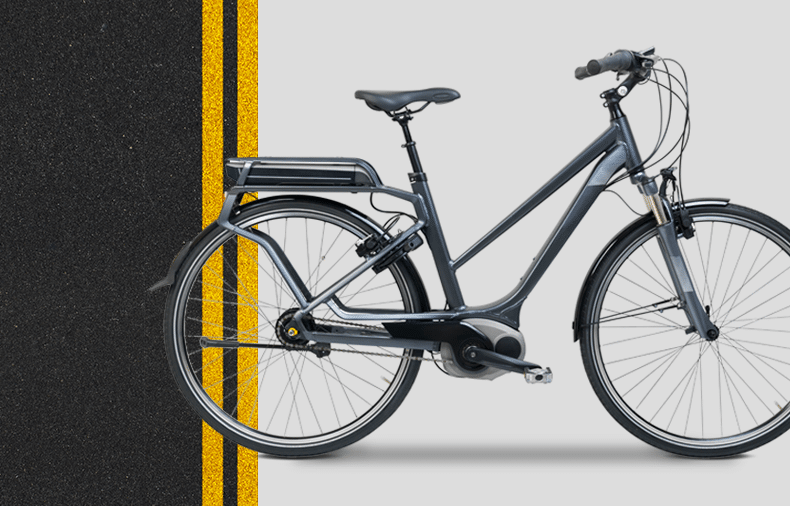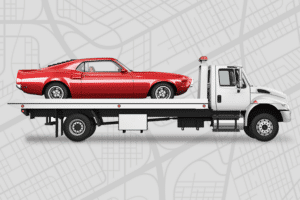E-bikes, or motorized bicycles, have become the default commuting option for thousands, thanks to their convenience, speed and efficiency. Check out our simplified list of e-bike laws so you can ride safely and legally in your state.
If you’re like millions of Americans who are sick of sitting in traffic, pouring money into a vehicle payment, remembering to pay that sneaky insurance bill, and loathe the process of finding a parking spot everywhere you go, you’ve probably looked into alternative modes of transportation.
There are motorcycles and bicycles, mopeds and scooters, and dozens of other options to make your commute faster and greener, but one type stands apart for its ingenuity and universal appeal: e-bikes.
E-bikes are a broad category of bicycles that combine the power of the cyclist’s pedals with a compact motor. Because they’re relatively new, legislation specifically referencing e-bike laws is lagging and lacking in many states.
If you’re interested in adopting the e-bike way of life, it’s important to first understand how the laws in your area will affect you.
This guide is intended to be used as a general resource; you should check state and municipality laws carefully before you set out.
What are the federal e-bike laws?
Since 2002, e-bikes have been regulated under federal law, when Public Law 107-319 was passed, officially designating e-bikes as a consumer product, subject to the protections and standards of similar products, while explicitly separating them from motor vehicles. The law, however, does not override local and state traffic laws. Because of this, individual states are allowed to enact, or decline to enact, laws specifically for e-bikes.
To help regulate these varying laws, the Bicycle Product Suppliers Association (BPSA) established three classes of e-bikes to differentiate between types and levels of power. This class system is useful because it gives more freedom to lower-powered e-bikes by allowing them in most places regular bicycles are used.
The three classes of e-bikes, according to the BPSA are:
- Class 1 electric bicycle. This is a bicycle equipped with a motor that provides assistance only when the rider is pedaling, and that ceases to provide assistance when the bicycle reaches the speed of 20 miles per hour. Essentially, a low-speed e-bike that performs much like a traditional bike.
- Class 2 electric bicycle. This is a bicycle equipped with a motor that may be used exclusively to propel the bicycle, and that is not capable of providing assistance when the bicycle reaches the speed of 20 miles per hour. Essentially, a mid-speed e-bike that carries slightly more power than a traditional bicycle.
- Class 3 electric bicycle. This is a bicycle equipped with a motor that provides assistance only when the rider is pedaling, and that ceases to provide assistance when the bicycle reaches the speed of 28 miles per hour, and is equipped with a speedometer. Essentially, a higher-powered e-bike that can outperform a traditional bicycle.
What are the e-bike laws in my state?
Most states fall into one of three categories:
- States that have laws specifically for e-bikes and use the three-class system
Thanks to the growing adoption of the three-class system, laws surrounding e-bikes in certain states are actually quite clear and consistent.In general, Arizona, Arkansas, California, Colorado, Connecticut, Georgia, Idaho, Illinois, Indiana, Maine, Maryland, Michigan, New Hampshire, New Jersey, Ohio, Oklahoma, South Dakota, Tennessee, Texas, Utah, Virginia, Washington, Wisconsin, and Wyoming all have uniform e-bike laws:- Class 1 and 2 e-bikes are allowed wherever human-powered bicycles are allowed.
- Class 3 electric bicycles can be ridden on streets and roadways where traditional bicycles are permitted, including bicycle lanes, but are restricted from slower speed areas such as multi-use paths.
- Class 3 electric bicycles may also be subject to additional requirements, such as a minimum user age and helmet mandate.
- Electric bicycles are not subject to any licensing, registration, or insurance requirements.
- States with specific e-bike laws, without classes
Some states do not use the three-class system but have some rules in place for e-bikes, which generally follow a similar pattern.If you live in Delaware, Florida, Hawaii, Iowa, Kansas, Kentucky, Minnesota, Mississippi, Montana, Nebraska, North Carolina, Nevada, Oregon, Pennsylvania, South Carolina or Vermont, you should specifically research laws for your state. In general, however, e-bike laws in your state follow these general rules.- E-bikes are not subject to the registration, licensing or insurance requirements that apply to motor vehicles
- E-bikes with less than 750w (1000w in a few states) with a top speed below 20 mph are specifically defined either as “bicycles,” “e-bicycles,” “a bicycle with a motor attachment,” or with similar wording.
- Some states have age minimums for those who can ride e-bikes; typically the requirement is either 16 or 18 years old.
- In states that require bicycle riders to wear helmets, e-bike riders are also required to wear them.
- E-bikes are generally allowed wherever bicycles are allowed. Some states allow e-bikes on roads, trails and bike lanes, but not on sidewalks.
- Because these states have varying versions of similar laws, be sure to check your state’s specific requirements surrounding your e-bike’s wattage, as well as whether there are age or helmet requirements. Finally, be sure to understand whether you can ride an e-bike on public sidewalks or trails, as each state has a slightly different take on this.
- States with unclear laws that regulate e-bikes like motor vehicles or motorcycles
Other states have more confusing laws surrounding e-bikes. Many classify them as mopeds or motorcycles, which are notably different from e-bikes. Because of these overlapping laws, it can be confusing to understand how to legally operate an e-bike.In virtually all of these states, e-bikes cannot be ridden on sidewalks. However, individual municipalities have varying rules on whether they can be used on bike paths. The only states that require an e-bike to be insured are New Mexico, North Dakota and West Virginia.Be sure to double check your municipality and state’s e-bike laws before hitting the road, but keep reading to see the general rules for your state:- Alabama: E-bike riders must have an e-bike license, be over 14 years old and wear a helmet. You don’t need to register or insure an e-bike.
- Alaska: E-bike riders must have an e-bike license and be over 14 years old. You don’t need to register or insure an e-bike, and you’re not required to wear a helmet.
- Louisiana: E-bike riders must register their e-bike and have a license to operate it. Riders must be at least 15 and wear a helmet. You do not need to insure an e-bike.
- Massachusetts: E-bike riders must register e-bikes and hold a license. Riders must be at least 16 and wear a helmet. You do not need to insure an e-bike.
- Missouri: E-bikes are classified as mopeds. Riders need to have an operator’s license and be at least 16. Helmets, registration and insurance are not required.
- New Mexico: E-bikes are classified as mopeds. E-bikes need to be registered and insured. No specific license is required, but riders must be at least 15.
- New York: This is the state with the most ambiguous laws for e-bikes. In New York, e-bikes are subject to licensing and insurance requirements like all other motor vehicles. The confusing part of this law is that there is no technical classification for e-bikes, so properly meeting the requirements of motor vehicle operation is impossible. Thus, it is currently illegal to operate an e-bike in the state of New York.In the City of New York, however, Class 1 ebikes are treated as bicycles under city law, so they can be ridden in accordance with all other relevant laws for pedal-driven bicycles.
- North Dakota: E-bikes are classified somewhere between bicycles and motor vehicles, with some requirements from both categories applying to e-bike laws. The same requirements for licensing, registration and insurance for motor vehicles apply to e-bikes. Riders must be at least 14.
- Rhode Island: This state also has confusing rules for e-bikes. In Rhode Island, e-bikes are classified as “vehicles,” but not as “motor vehicles.” Thus, they do not have to be registered or insured, and there are no clear rules on who is allowed to ride an e-bike.
- West Virginia: In West Virginia, e-bikes are classified as mopeds, which excludes them from the requirements for bicycles, but as a form of a motor vehicle, they require the same licensing, registration and insurance as motor vehicles. E-bike riders must be at least 15 and wear a helmet.
Depending on where you live and ride, laws for e-bikes can be complicated or simple. No matter where you are, be sure you fully understand how to ride legally. With a bit of understanding, some protective gear (always recommended, but not always legally required,) you’ll enjoy a commute that’s easy on the legs, and the earth.
Have your eye on an e-bike, but not sure how to ship it? Get quotes now for competing rates on e-bike shipping.




